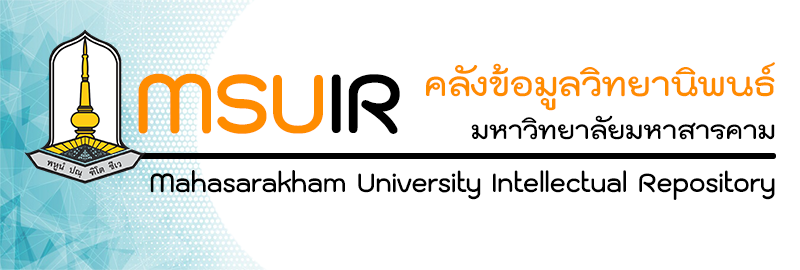Please use this identifier to cite or link to this item:
http://202.28.34.124/dspace/handle123456789/2649Full metadata record
| DC Field | Value | Language |
|---|---|---|
| dc.contributor | Khattana Mungsanti | en |
| dc.contributor | เขตธนา มุ่งสันติ | th |
| dc.contributor.advisor | Apisak Sukying | en |
| dc.contributor.advisor | อภิศักดิ์ สุขยิ่ง | th |
| dc.contributor.other | Mahasarakham University | en |
| dc.date.accessioned | 2025-05-07T10:01:04Z | - |
| dc.date.available | 2025-05-07T10:01:04Z | - |
| dc.date.created | 2024 | |
| dc.date.issued | 5/4/2024 | |
| dc.identifier.uri | http://202.28.34.124/dspace/handle123456789/2649 | - |
| dc.description.abstract | Word reading is crucial for vocabulary development, acting as a link between recognizing and understanding words. Phonics instruction significantly aids in word decoding, enhancing reading fluency, confidence, and vocabulary access, thus fostering overall literacy. This study examines the effects of phonics instruction on the word reading ability of 13 primary school EFL learners in Thailand, employing a convergent parallel mixed-methods approach. SPSS was utilized to analyze quantitative data, including pre- and post-test scores from two tests: The Letter-Sound Recognition Task (LSRT) and the Word Reading Task (WRT). Statistical analysis, including paired t-tests and ANOVA, was conducted to determine the significance of instructional impacts. The results show that post-test scores of participants are higher than pre-test score in both LSRT and WRT. However, ANOVA analysis revealed no significant differences among grade levels. The focus group yielded qualitative insight that unveiled enhanced reading confidence and a feeling of achievement among primary school students, in addition to the cognitive and academic advantages associated with phonics. However, participants also expressed challenges, such as the monotony of repetitive teaching content and difficulties with complex vocabulary. This study underscores the value of phonics instruction in enhancing EFL reading skills among young learners while highlighting areas for pedagogical refinement to maximize learner engagement and instructional effectiveness. The findings advocate integrating diverse and dynamic phonics instruction strategies within EFL curricula to address varied learner needs and preferences. | en |
| dc.description.abstract | - | th |
| dc.language.iso | en | |
| dc.publisher | Mahasarakham University | |
| dc.rights | Mahasarakham University | |
| dc.subject | phonics instruction | en |
| dc.subject | word reading | en |
| dc.subject | word decoding | en |
| dc.subject | Thai EFL primary school learners | en |
| dc.subject.classification | Arts and Humanities | en |
| dc.subject.classification | Education | en |
| dc.subject.classification | Education science | en |
| dc.title | Effects of Phonics Instruction on Thai EFL Primary Students’ Word Reading Ability | en |
| dc.title | ผลของการสอนแบบโฟนิกส์ต่อความสามารถในการอ่านคำศัพท์ของนักเรียนชั้นประถมศึกษาที่เรียนภาษาอังกฤษในฐานะภาษาต่างประเทศ | th |
| dc.type | Thesis | en |
| dc.type | วิทยานิพนธ์ | th |
| dc.contributor.coadvisor | Apisak Sukying | en |
| dc.contributor.coadvisor | อภิศักดิ์ สุขยิ่ง | th |
| dc.contributor.emailadvisor | apisak.s@msu.ac.th | |
| dc.contributor.emailcoadvisor | apisak.s@msu.ac.th | |
| dc.description.degreename | Master of Education (M.Ed.) | en |
| dc.description.degreename | การศึกษามหาบัณฑิต (กศ.ม.) | th |
| dc.description.degreelevel | Master's Degree | en |
| dc.description.degreelevel | ปริญญาโท | th |
| dc.description.degreediscipline | Department of Western Languages and Linguistics | en |
| dc.description.degreediscipline | ภาควิชาภาษาตะวันตกและภาษาศาสตร์ | th |
| Appears in Collections: | The Faculty of Humanities and Social Sciences | |
Files in This Item:
| File | Description | Size | Format | |
|---|---|---|---|---|
| 65010181008.pdf | 1.38 MB | Adobe PDF | View/Open |
Items in DSpace are protected by copyright, with all rights reserved, unless otherwise indicated.

